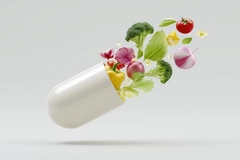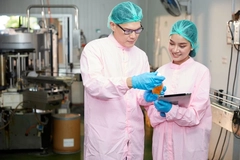Increasing global demand for animal foods threatens climate and widens nutrition gaps
UN FAO and OECD project rising incomes and greater agricultural productivity by next decade

Experts have predicted a 6% increase in global per capita consumption of animal-sourced foods over the next decade. With increasing urbanization, they anticipate a rise in this trend across lower- and middle-income countries by 24%. However, nutritional gaps and mounting environmental pressures paint a complex picture, reveals the Agricultural Outlook 2025–2034.
There is unequal access to nutrient-rich diets. The report by the UN FAO and the Organisation for Economic Cooperation and Development (OECD) warns that 22% of all calories will cross international borders over the next decade.
The analysis expects a 14% increase in global agricultural and fish production over the next decade. Middle-income countries will likely remain the main sources of global agricultural expansion.
However, this would come at the cost of rising direct greenhouse gas (GHG) emissions from agriculture, which are set to rise by 6% by 2034.
Greater efforts are necessary to ensure that people of all incomes, especially those on the lowest incomes, benefit from improved nutrition, the report underscores.
It delves into the market trends and projections, risks, and uncertainties of cereals, oilseeds and oilseed products, sugar, meat, dairy and its products, fish and other aquatic products, biofuels, cotton, and products like roots, pulses, and tropical fruits.
Nutritional gap
The analysis expects rising incomes will increase individuals’ daily intake of meat, dairy, fish, and other animal products over the next decade.
However, low-income countries’ daily consumption of these animal-sourced foods will remain low at 143 kcal by 2034. This is below the 300 kcal recommended in the Healthy Diet Basket benchmark used by the FAO. In middle-income countries, this will reach 364 kcal.
“This enduring nutritional gap highlights important structural barriers, including limited access to affordable protein-rich foods,” the report highlights.
“International trade will remain indispensable to the global agri-food sector. Multilateral cooperation and a rules-based agricultural trade are essential to facilitating these trade flows, balancing food deficits and surpluses across countries, stabilizing prices and enhancing food security, nutrition, and environmental sustainability.”
Reducing agricultural GHG emissions
Based on the projected productivity improvements, the carbon intensity of agricultural production is anticipated to fall across all regions in the next decade.
According to the researcher’s scenario analysis, undernourishment can be eliminated, and direct agricultural GHG emissions can be lowered by 7% from current levels. However, achieving this depends on a 10% increase in food production and a 15% improvement in agricultural productivity, backed by emissions-reducing technologies.
“We have the tools to end hunger and boost global food security,” says Mathias Cormann, Secretary-General of the OECD.
“Innovations such as precision farming, improved nutrient and water management, feed enhancements in livestock systems, and low-cost scalable practices such as crop rotations, intercropping, and compost-based nutrient management represent some of the pathways that could support such emission reductions,” the paper details.
“The pace and extent of technology implementation, infrastructure development, and knowledge transfer will influence how these outcomes may unfold in practice.”
Nutrition Insight recently spoke to the lead author of a UN policy brief, finding the double-edged role of irrigation, which improves child nutrition in areas where water resources are already under severe stress.












